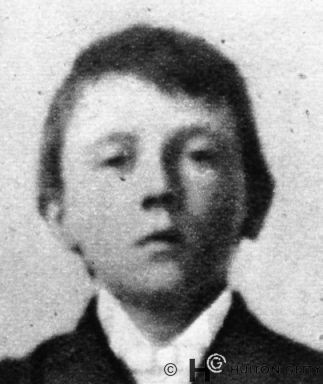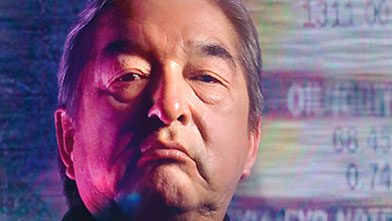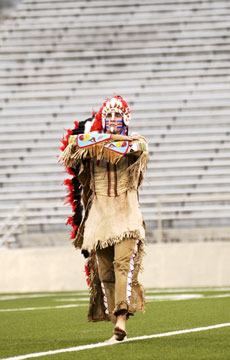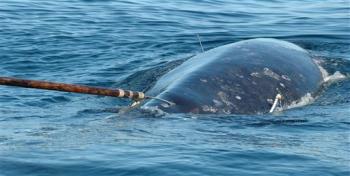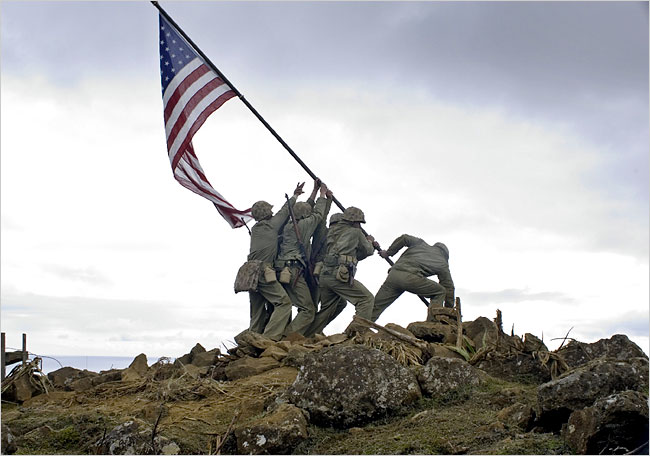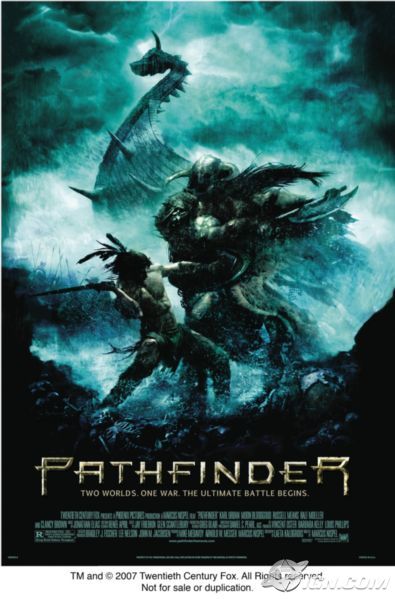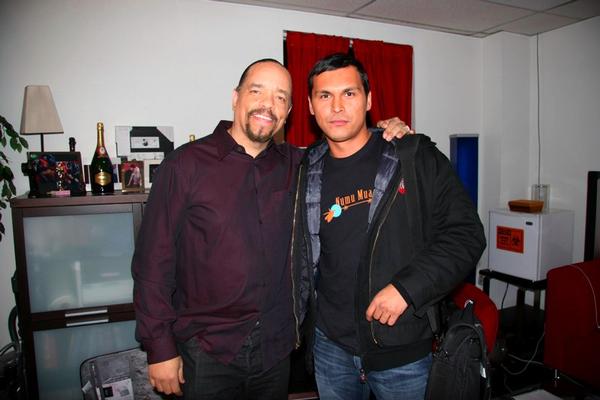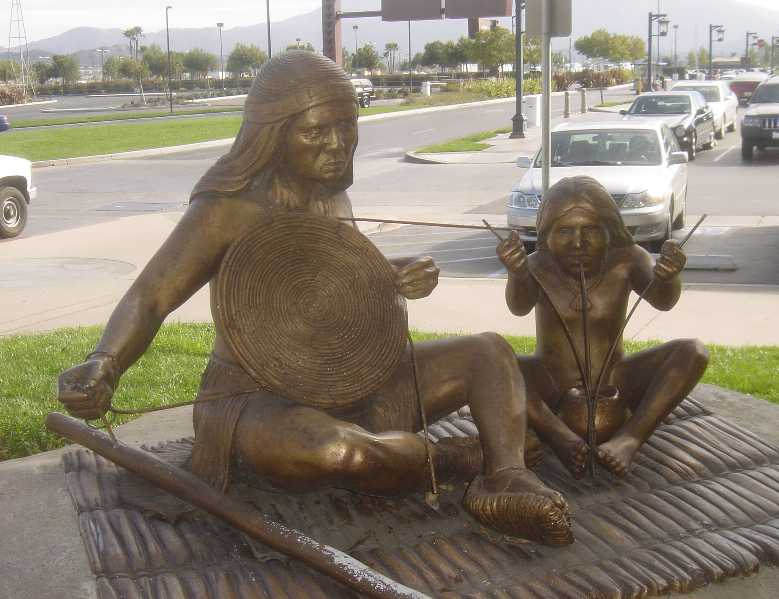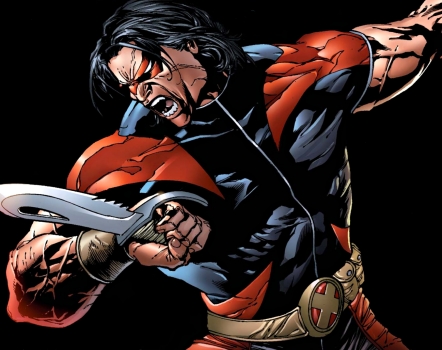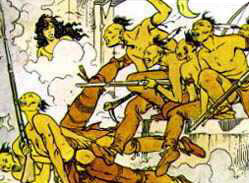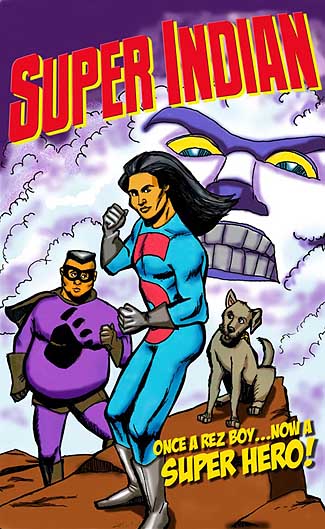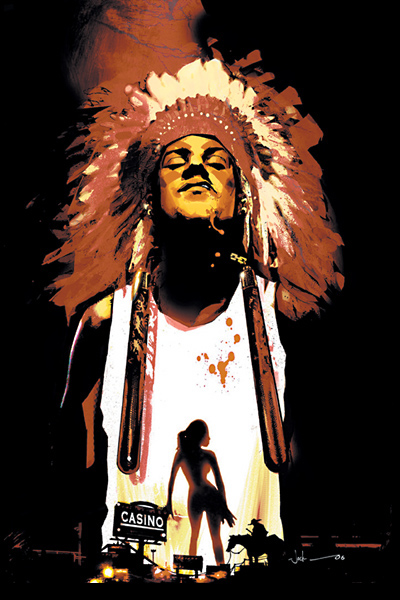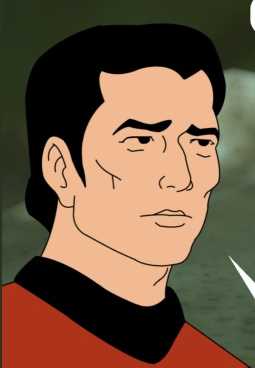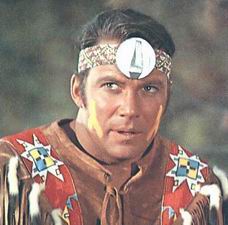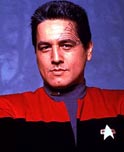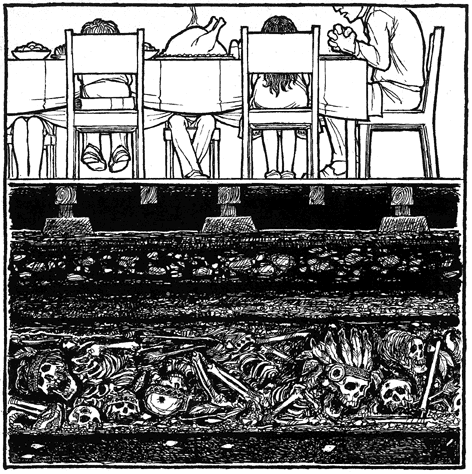How did American Indians end up on a
Star Trek world? And more important, why?
This posting tells what little is "officially" known of Miramanee's world. But the
Star Trek novel
Preserver expands significantly on the story of Miramanee's "Wise Ones."
Star Trek novels aren't considered part of the canon, but as far as I'm concerned, they should be.
Preserver takes place in the
The Next Generation era. James T. Kirk died in
Star Trek: Generations but was, er, reconstructed. He joins Spock, McCoy, and Captain Picard's crew in battling Tiberius, emperor of the Mirror Universe.
[Spoiler alert]
According to
Preserver, Captain Kirk discovered the first Preserver artifact: Miramanee's obelisk. By the time of the novel, the Federation has discovered another 117 obelisks, none of which they can figure out. Then Kirk stumbles across the 119th obelisk, which was manufactured only six years previously.
Far from vanishing billions of years ago, the Preservers are still alive. More to the point, they're still manipulating people and events. In addition to seeding worlds with humanoid life, they've created duplicate Earths (e.g., Miri's world in "Miri").
What Preserver saysHere's
Preserver's description of the origin of Miramanee's world:
The first obelisk has been discovered by Kirk on a Class-M planet, home to the descendants of a tribal community of humans abducted from the central plains of Earth's North America almost a thousand years earlier. Even at the time, McCoy recalled, he and Kirk and Spock had understood the significance of those people's original abduction. It had occurred just prior to the arrival of the most recent wave of Europeans to colonize North America in the sixteenth century--subsequently decimating the indigenous North American population. The colonial invasion of Earth's North American continent had cost entire cultures, traditions, and languages, all lost forever.
That was where the name "Preservers" had come from. For on the Class-M world, it had been the obelisk that had protected and maintained the original culture of the transplanted humans. At the time, the abduction event itself had seemed to McCoy to have been a benign intervention in the history of a troubled and warlike world--Earth.But is the Preservers' intent really benign?
McCoy thought it through. He could see the reason for Starfleet's concern. The evidence suggested that whoever or whatever the Preservers were, they had existed as a coherent society for more than two billion years--a time span longer than any known, extant, corporeal, sentient life-form that existed in the Alpha and Beta quadrants.
The proof was illustrated by the likely fate the tribal group on the Class-M planet would have suffered on Earth if they had not been abducted. The histories of a hundred different worlds contained examples of what happened during the initial stage of global exploration and expansion--when two cultures meet, the culture that is least technologically advanced seldom survives.
For all that Starfleet pressed for the ongoing exploration of the galaxy, it wasn't just McCoy who understood the unspoken question that accompanied each unexpected first contact: What would happen to the Federation when it finally met a more advanced culture that had no Prime Directive?It's all about KirkMany of the Preservers' manipulations revolve around Captain Kirk. They may have intervened to give him command of the Enterprise early, and sent the Vulcans to meet Zefram Cochrane's first warp flight. Kirk and crew are stunned at the magnitude of these acts: the power to manufacture whole planets and arrange events eons in advance.
Our heroes even wonder if the Preservers created the Mirror Universe. As it turns out, no, but they anticipated its creation and used it in their plot. Again, the scope of their machinations is almost impossible to grasp.
Everything they've done has served to bring Kirk to a single time and place. Billions of years of scheming finally culminate in Kirk's meeting them and learning what they want.
What the Preservers believeThe Preservers disagree with the Federation's Prime Directive. Their philosophy is that moral beings must intercede to help each other. Their actions--spreading life and saving people from extinction--exemplify this credo.
They've chosen Kirk, who has never liked the Prime Directive, to convey their age-old beliefs. To be a new kind of "preserver." His career of aiding others stands as a rebuke to the Federation's hands-off policy. It signifies that the Federation must change its detached ways or suffer disastrous consequences.
This is a powerful conclusion because it ties together so many
Trek threads: the many Earth-like races and worlds, Kirk's "luck" at being in the right place at the right time, and his ambivalence about the Prime Directive. And it all stems from one little story about a Native world. Because Kirk met and fell for Miramanee, the future of the galaxy has changed.
The Prime Directive in realityAre Kirk and the Preservers right about the Prime Directive? You could apply this conundrum to America's history and see what you get. Are Indians better off because Europeans brought their arts and sciences and technology along with drink, disease, and death? Hard to say.
You could apply the conundrum to Iraq too. Are the Iraqi people better off with Saddam Hussein gone and their country in ruins? With the hope of democratic peace and the reality of civil war? Again, it's hard to say.
Preserver is a thought-provoker. Unfortunately, the nitty-gritty of its storytelling isn't quite as impressive as the big themes I've outlined. Still, it's a fine
Star Trek novel.
Rob's rating: 8.0 of 10.












